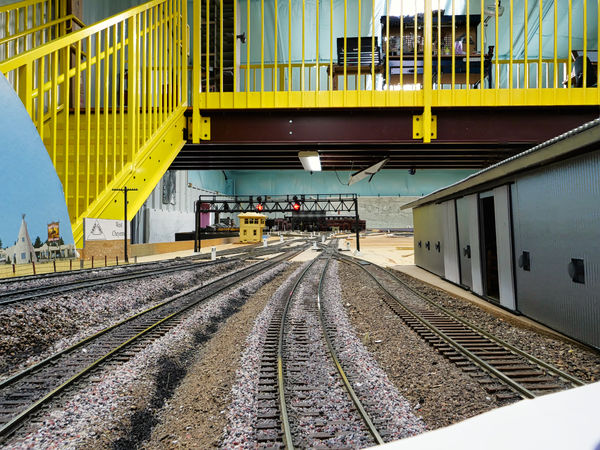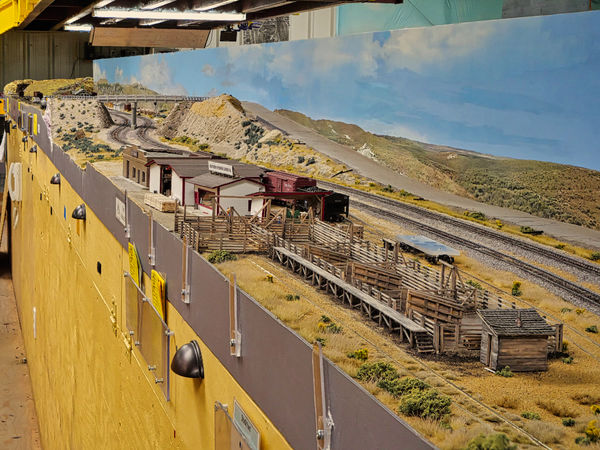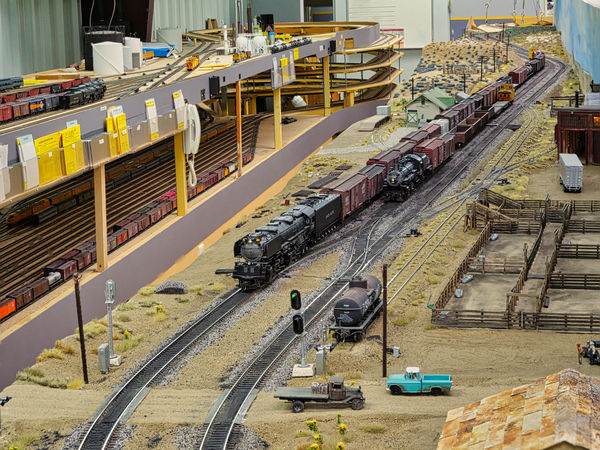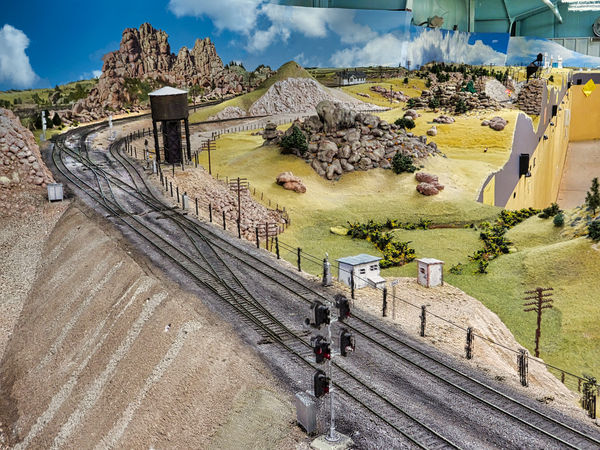Posts for: Verryl
Aug 14, 2021 10:43:37 #
I didn't mean to show that I was smart, only that it is probably a widespread con. Watch for it and delete ASAP.
Verryl
Verryl
Aug 14, 2021 10:25:15 #
My story is shorter. I got the same (?) email offering $580+. I deleted it immediately. I am 79 ears old.
Verryl
Verryl
Jul 25, 2021 09:40:48 #
https://davescomputertips.com/how-to-rename-filesfolders-in-sequential-number-order/
Google "Renumber files in Win 10 Explorer Folder"
Google "Renumber files in Win 10 Explorer Folder"
Jul 19, 2021 21:35:08 #
No, the recipient does not have to have Dropbox. He can view it/read it/edit it (text or photo) just like it is his folder, which I guess it is, after he downloads it. Any changes he makes are limited to his file on his computer--he can't change your original.
Verryl
Verryl
Jul 19, 2021 11:01:28 #
I have 9 computers in 5 locations (2 states), and all are connected to Dropbox. I can start some work (a file, email, anything) on one and move to another computer and open the file and continue work. I can also transfer large photos in a folder by creating a new folder, loading photos and/or other files into it, then have DB email a link to one or many people--no need to zip compress and use a phony file extension to fool Gmail. DB used to be slow to download, so that I would have to wait 8-10 hours or overnight to open a file on the second remote computer, but it must be faster now, because I have never seen this problem the last few years. Everything I save automatically goes to DB and to the computer I created it on (or another if I move to another of the 9 computers), so I never forget to backup. I pay $100/year for lots of storage, business and personal. I use an old but very large version of Peachtree Accounting and all my business work is on it. My son has taken over the business work, and he uses it also--2 of the computers are "his;" he can work in our downstairs office or from his home across town (Sedona, AZ), and I can access or create anything when I am in my second home in CA 460 miles away.
Verryl
Verryl
May 13, 2021 11:05:29 #
I always use focus stacking on my 50 x 75 foot model railroad to get all of the scenery on long benches (45-65 feet long) in sharp focus. I tried Helicon to stack images focused about 5 feet apart, but it was hard, meaning it took a delicate touch, to focus each image, because my normal zoom lens required only a tiny part of a turn to adjust the focus over those ranges. Nevertheless, I got acceptable focus over the whole bench length.
Then a friend suggested his Lumix G9 by Panasonic with a Leica 12-60mm lens. This camera takes a 1 second long video at 30 frames/second, and with a few clicks by finger on the back screen, the video is processed into a single image that is focus stacked from the movie frames. The processing in-camera takes about 1 minute. They call it a "Post Focus" mode. Because both the camera and lens has 5 axis image stabilization, most shots can be hand held, if you can stand in a comfortable position holding the camera. When I need to lean over a bench to shoot down it, I use a mini-tripod. The assembly/processing won't complete if it finds motion blurred frames.
In the photo of the tracks, the far wall with the Union Pacific drawing of the Ogden, Utah yard is about 45 feet away from the camera. Te camera was set on wood blocks as if on a tripod. The near tracks with ballast are a few inches away from the front of the lens.
The second photo is a hand held view of a bench with scenery and structures extending about 50 feet from the camera. The far wall is about 60 feet away.
Then a friend suggested his Lumix G9 by Panasonic with a Leica 12-60mm lens. This camera takes a 1 second long video at 30 frames/second, and with a few clicks by finger on the back screen, the video is processed into a single image that is focus stacked from the movie frames. The processing in-camera takes about 1 minute. They call it a "Post Focus" mode. Because both the camera and lens has 5 axis image stabilization, most shots can be hand held, if you can stand in a comfortable position holding the camera. When I need to lean over a bench to shoot down it, I use a mini-tripod. The assembly/processing won't complete if it finds motion blurred frames.
In the photo of the tracks, the far wall with the Union Pacific drawing of the Ogden, Utah yard is about 45 feet away from the camera. Te camera was set on wood blocks as if on a tripod. The near tracks with ballast are a few inches away from the front of the lens.
The second photo is a hand held view of a bench with scenery and structures extending about 50 feet from the camera. The far wall is about 60 feet away.


May 5, 2021 10:21:19 #
I have 3 astronomical scopes,
a 1000 mm focal length Schmidt Cassegrain (4 inch diameter objective, f/10), can be used hand held if steadied on table, wall, etc.
a 2032 mm FL Schmidt Cassegrain (8 inch diameter/f10). Needs to be on very heavy tripod made for astronomy
a 2235 mm FL Newtonian (16 inch diameter mirror, f/5.5). Permanently mounted in my observatory. Can be hauled out to remote site and set up for 1 or 2 nights, preferably by two people, although I could do it alone before I built the observatory.
All fitted to scopes with the same T ring--your camera may use another adapter
Weights, respectively including mounts
4" ~ 1-2 pounds, much less than a telephoto lens (uses a mirror, not heavy glass lenses)
8" ~ 30-40 pounds including tripod, not at all portable--set it up and shoot all exposures from there
16" ~ estimated 500+ pounds
I took the 4" to Africa, and got great shots hand held by standing and resting the camera/scope on the rim of the open top vehicle, of which we were not allowed out of. Other tourists were helpful and sat still while I made a shot. I was the only one who got shots of eagles and other birds up to one mile away.
I have only used the 8" and 16" for astronomy--subjects do move, but slowly!!! Negligible image loss, if any. Of course, these are very expensive scopes.
Must stand on ladder to reach the eyepiece if object is much above the horizon. I find that to be the case for most visible stars at night.
4" is a Meade scope, 8" is a Celestron, 16" is a custom built
a 1000 mm focal length Schmidt Cassegrain (4 inch diameter objective, f/10), can be used hand held if steadied on table, wall, etc.
a 2032 mm FL Schmidt Cassegrain (8 inch diameter/f10). Needs to be on very heavy tripod made for astronomy
a 2235 mm FL Newtonian (16 inch diameter mirror, f/5.5). Permanently mounted in my observatory. Can be hauled out to remote site and set up for 1 or 2 nights, preferably by two people, although I could do it alone before I built the observatory.
All fitted to scopes with the same T ring--your camera may use another adapter
Weights, respectively including mounts
4" ~ 1-2 pounds, much less than a telephoto lens (uses a mirror, not heavy glass lenses)
8" ~ 30-40 pounds including tripod, not at all portable--set it up and shoot all exposures from there
16" ~ estimated 500+ pounds
I took the 4" to Africa, and got great shots hand held by standing and resting the camera/scope on the rim of the open top vehicle, of which we were not allowed out of. Other tourists were helpful and sat still while I made a shot. I was the only one who got shots of eagles and other birds up to one mile away.
I have only used the 8" and 16" for astronomy--subjects do move, but slowly!!! Negligible image loss, if any. Of course, these are very expensive scopes.
Must stand on ladder to reach the eyepiece if object is much above the horizon. I find that to be the case for most visible stars at night.
4" is a Meade scope, 8" is a Celestron, 16" is a custom built
Mar 23, 2021 11:29:49 #
I get 6 or 8 strips daily from each of these: Comics Kingdom and MyComicsPage.com They each have many more strips to choose from. There is a nominal charge of about $20/year for each, but it is well worth that for me. LA Times on Kindle does not print the comics.
Feb 7, 2021 09:49:22 #
I made a 3 legged mount to set on the model railroad benches without crushing the scenery. With it I can shoot at model train level along a bench. I used 3 1/4-20 threaded rods screwed through EZ Lok threaded inserts in scrap hardwood as the "tripod" legs. They are much smaller than feet of the mini tripod shown beside it. I had on hand the Benro 3-Way Geared Head (GD3WH), so I screwed it on as an after thought. It would work nearly as well without the Benro, and hold the camera just a few inches off the bench instead of 6" or so. The threaded rods adjust up and down individually to hold the camera level on a model scenery "hill." I originally meant to mount the camera on the 1" hole saw plug near the single front screw, but it was unstable that way, so I drilled a new hole for a 5/16" bolt at the back and added the Benro. That put the weight (Benro + camera + lens) between the two rear screws, so the assembly did not tend to tip.

Jan 26, 2021 08:36:16 #
Turn her down. She wears glasses.
Verryl
Verryl
Jan 26, 2021 08:32:48 #
We used to stack 35mm film negatives for the same reason, to get rid of noise--imperfect recording of grains on the film, which was random, just like a digital detector. Plus with film there was reciprocity failure--all film sensitivity (speed) rolls off rather sharply after a certain time, with the knee of the curve several seconds to a few minutes of exposure. First we would hyperprocess the film before shooting--evacuate it to dry it and remove oxygen, then backfill with forming gas (welding supply house), which was 8% hydrogen and ~92% N2, and hold in this atmosphere for 50 hours at, I think 50 degrees C??? Amateur astrophotographers invented this process, and professionals adopted it, so it became standard. I still have my small aluminum squat cylinder with a removable O-ring sealed lid and a hose port which could be attached to a hand pump to evacuate it. We'd pump it out as low a pressure as we could get and backfill with gas and repump 4-5??? times. There were commercially available tank/hose/pumps available. The tank also had a heating coil (maybe we wrapped a strap around it) to heat it when done pumping and backfilling. There was a temp regulator to maintain the temp. I would hyperprocess my film 50 hours + the time too drive to the desert dark site plus setup time, then open the can and load the film when it got dark. Of course after a 2 hour drive plus 4-6 hours setup time it was cooled down and room temp.
Verryl
Verryl
Verryl
Verryl
Jan 23, 2021 10:58:38 #
Note to all new astrophotographers: This is an excellent photo of the moon, sharply focused on the terminator. But the moon's limb is out of focus. This is nearly unavoidable. I always focused on the part of the moon I wanted to be in focus. I see frequent advise to focus on infinity, but that may not be best if you have enough focus control at great distances.
Another bit of poor advise is on exposure. The moon is a daylight object. A bit of thought will assure you, that it is a daylight object even at night. Shutter speeds of 1/125 or 1/250 are common. I usually used a Meade 4inch Schmidt Cassegrain scope with fixed f/10 at those speeds.
Verryl, old astrophotographer
Another bit of poor advise is on exposure. The moon is a daylight object. A bit of thought will assure you, that it is a daylight object even at night. Shutter speeds of 1/125 or 1/250 are common. I usually used a Meade 4inch Schmidt Cassegrain scope with fixed f/10 at those speeds.
Verryl, old astrophotographer
Dec 28, 2020 09:39:48 #
I agree, too many commercials. OTOH, it allows me ample time to read a book.
Book: a medium for recording information in the form of writing or images, typically composed of many pages bound together and protected by a cover.
Verryl
Book: a medium for recording information in the form of writing or images, typically composed of many pages bound together and protected by a cover.
Verryl
Dec 17, 2020 10:23:43 #
I guess a "Quick Reply" does not allow attachments. Here they are to go with my Lumix G camera post on in-camera focus stacking.
The first example is a stacked video-into-a-JPG, one of a series showing how the signals work for a main line train passing a local train that has taken refuge on the center siding. I used a minature tripod set on the bench to maintain the camera position for the series of about 5 photos showing the local switching cars while the main line train approached and passed. I selected this focus stacked photo because it shows the upper and lower adjacent benches, which are all in focus. The view photographed is about 55 feet deep with the near parts, the trucks on the dirt road, about 9 feet from the camera.
The second photo is a focus stacked hand held in-camera JPG assembly of a view of Dale Junction in Wyoming where Track #3 joins Tracks 1 and 2. The multiple crossovers are used by us and Union Pacific on the prototype to change from right hand running on #1 and #2 to left hand running to take advantage of the gentler grade up the western slope of Sherman Hill on the newer track#2 to the right of the signals. The inner wall of the building in the extreme upper right corner is about 0 feet from the camera. The near stack of 5 signals on a single mast are about 4 feet from the camera.
The first example is a stacked video-into-a-JPG, one of a series showing how the signals work for a main line train passing a local train that has taken refuge on the center siding. I used a minature tripod set on the bench to maintain the camera position for the series of about 5 photos showing the local switching cars while the main line train approached and passed. I selected this focus stacked photo because it shows the upper and lower adjacent benches, which are all in focus. The view photographed is about 55 feet deep with the near parts, the trucks on the dirt road, about 9 feet from the camera.
The second photo is a focus stacked hand held in-camera JPG assembly of a view of Dale Junction in Wyoming where Track #3 joins Tracks 1 and 2. The multiple crossovers are used by us and Union Pacific on the prototype to change from right hand running on #1 and #2 to left hand running to take advantage of the gentler grade up the western slope of Sherman Hill on the newer track#2 to the right of the signals. The inner wall of the building in the extreme upper right corner is about 0 feet from the camera. The near stack of 5 signals on a single mast are about 4 feet from the camera.


Dec 17, 2020 10:03:49 #
I use in-camera focus stacking with my mirrorless 4/3 Lumix G9 camera. I don't shoot insects or jewelry--only the very long benches my model railroad (40 - 65 feet long). The HO layout fills a 50 x 75 foot building, and the building walls prevent me from shooting from very far away from the near end of any bench. Besides I like to emphasize the largeness of the layout with shots over one or more benches, as the example below.
The G9 calls the in-camera setting "post focus." That setting takes a 1 second long video with varying focus for each frame of the video. After shooting I touch 3 buttons in turn on the camera back viewing screen and the camera assembles a composite image with the in-focus parts of the individual frames of the video. The assembly takes about 1 minute. I find I need to assembly each video clip immediately. Otherwise, if I skip one, I can do the in-camera assembly later, but it is easy to get confused and either skip one or duplicate the assembly, which for 15 or more images can result in a frustrating menagerie of un-assembled videos and assembled JPG's, with some duplicate JPGs thrown in.
Both camera and lens have in-camera image stabilization, so most of the time I can hold the camera still enough to avoid using a tripod. But if I shoot down one of the long benches by leaning over the bench, I am often unable to maintain the camera position from that awkward position, so then I use a tripod. With such a failed video, the camera gives an error message and will not continue it's processing.
The end result of the in-camera assembly is a JPG, which can be post processed like any other.
The G9 calls the in-camera setting "post focus." That setting takes a 1 second long video with varying focus for each frame of the video. After shooting I touch 3 buttons in turn on the camera back viewing screen and the camera assembles a composite image with the in-focus parts of the individual frames of the video. The assembly takes about 1 minute. I find I need to assembly each video clip immediately. Otherwise, if I skip one, I can do the in-camera assembly later, but it is easy to get confused and either skip one or duplicate the assembly, which for 15 or more images can result in a frustrating menagerie of un-assembled videos and assembled JPG's, with some duplicate JPGs thrown in.
Both camera and lens have in-camera image stabilization, so most of the time I can hold the camera still enough to avoid using a tripod. But if I shoot down one of the long benches by leaning over the bench, I am often unable to maintain the camera position from that awkward position, so then I use a tripod. With such a failed video, the camera gives an error message and will not continue it's processing.
The end result of the in-camera assembly is a JPG, which can be post processed like any other.